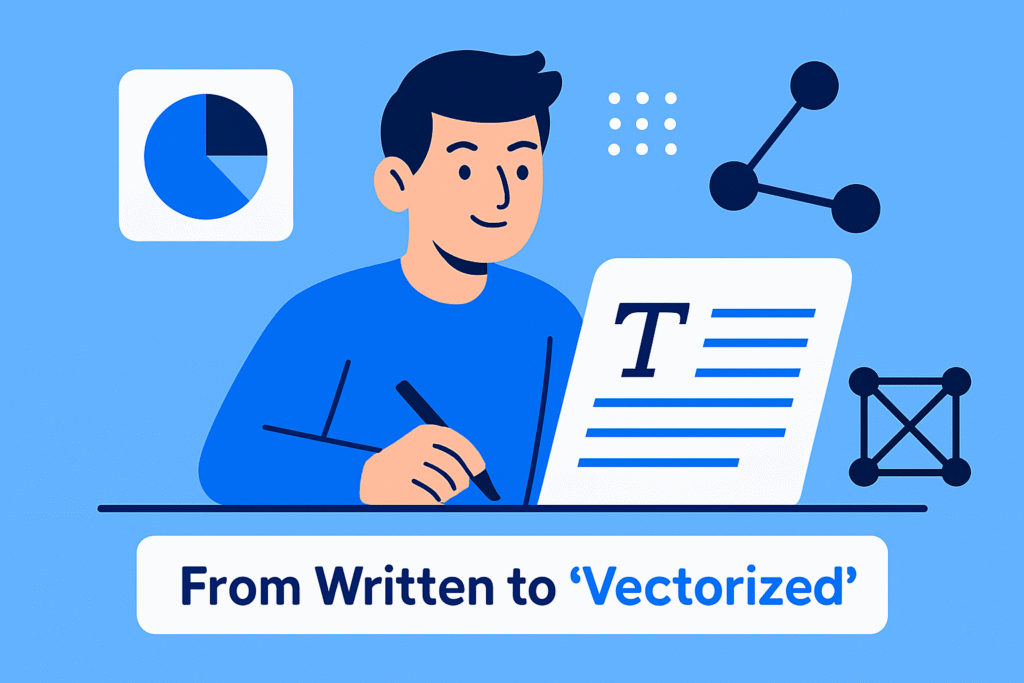Introduction: The Misunderstanding Holding Most Teams Back
For years, we created content assuming that search engines “read” our pages. But large language models (LLMs) do not work that way: they do not read text, do not interpret sections, and certainly do not process your content linearly.
What they actually do is reconstruct meaning in their latent space — a multidimensional map of concepts — built from patterns learned across millions of documents. In other words: it is not just what you write, but how the epistemic patterns of your content manifest inside the model.
This shift transforms how we build content, how we structure websites, and how we grow digital authority in the era of ChatGPT, Gemini, Claude, and Perplexity.
What Does “Reconstructing Meaning” Really Mean?
An LLM does not store your sentences or headings. Instead, it encodes your content into vectors: mathematical representations that capture conceptual relationships, clarity, coherence, and semantic density.
That is why, when a model replies, it is not “pulling your text”. It is generating a probable reconstruction based on the patterns it has internalized.
Simply put: LLMs don’t remember text — they remember structures of knowledge.
The Key Insight
Optimizing content for LLMs is not optimizing the words on the screen. It is optimizing the patterns models recognize as: clarity, authority, coherence, verifiability, and thematic consistency.
How This Impacts SEO: From Written Content to “Vectorizable” Content
1. Models Prefer “Vector-Compact” Content
Text filled with noise, unnecessary metaphors, or weak structure produces diffuse embeddings. Clear, conceptual writing with explicit relationships produces strong, dense vectors.
Consequence: the cleaner your semantics, the higher the chances the model will use your content when generating answers.
2. Authority No Longer Depends on Links — It Depends on Knowledge Topology
A domain that covers a topic with depth, consistency, and no internal contradictions forms a stable “shape” in semantic space.
If your content has conceptual gaps, the topology collapses — and your authority dissolves.
3. Consistency Becomes an Emergent Ranking Factor
LLMs detect:
- Internal contradictions
- Unverified claims
- Overly commercial or manipulative tone
When these appear, the model “downgrades” you: epistemic fragility. Result: you don’t get cited.

How to Write Content That LLMs Absorb, Recombine, and Use
4. Fractal Structure (the Model Understands It Better Than a Linear One)
LLMs recognize structures that repeat patterns across different scales:
- Introduction: conceptual frame
- Sections: the same frame, expanded
- Examples: compressed pattern
- Conclusion: reconstructed frame
This reinforces embeddings and dramatically increases citation probability.
5. Explicit Conceptual Relationships (LLMs Don’t Infer Them — They Need Them)
Example: “LLMs don’t read pages” → “LLMs reconstruct patterns” → “Therefore: optimize patterns, not text.”
These reasoning chains embed extremely well inside models. They are the foundation of effective SEO for LLMs.
6. Connect Concepts Through Intent, Not Through Keywords
Keywords still matter, but LLMs focus far more on:
- Connected concepts
- Logical hierarchy
- The “thinking system” of the domain
If your domain demonstrates organized thinking, you appear. If your site looks like a disconnected blog, the models ignore you.
Applying These Principles to Mindset Digital
For a digital-growth agency, the semantic space must be built around:
- Advanced SEO
- Applied AI
- Development and automation
- Strategic digital growth
Each article in this series expands on one of the 10 essential patterns for understanding and mastering generative engine optimization. This first post sets the epistemic foundation: unless we understand how models “think”, we cannot optimize for them.
Conclusion: Think Like an LLM to Rank in the Age of LLMs
Models do not read your page. They do not interpret your intent. They do not process your H1–H2 hierarchy. They do not understand your industry because of your keywords.
They only recognize patterns and reconstruct meaning.
That is why the future of optimization is not “SEO” in the traditional sense — it is semantic engineering: designing content that models can turn into stable, useful knowledge.
This article is the first in an 11-part series exploring the new frontier of digital visibility: SEO for LLMs. In the final post you’ll find a complete index with links to every topic.


